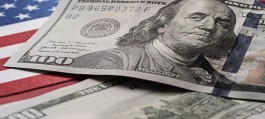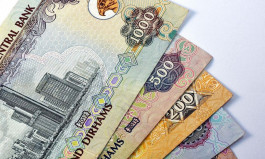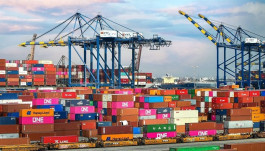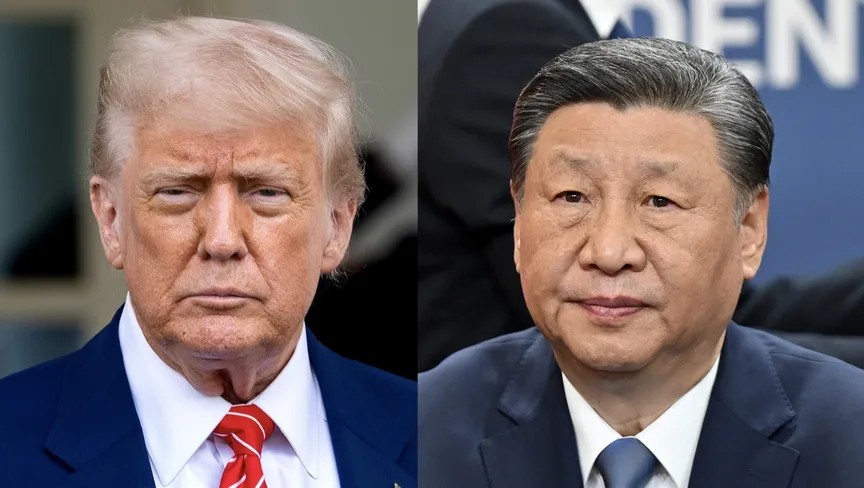Top US and Chinese trade negotiators said they reached understandings on a range of sticking points, paving the way for Presidents Donald Trump and Xi Jinping to strike a final agreement and ease trade tensions that have rattled global markets.
After two days of talks in Malaysia, a Chinese official said the two sides had reached preliminary consensus on issues including export controls, fentanyl, and shipping tariffs.
The threat of US tariffs on China has passed.
US Treasury Secretary Scott Besant said in an interview with CBS News that Trump's threat to impose 100% tariffs on Chinese goods is practically off the table, expecting China to make significant purchases of soybeans and postpone broad restrictions on rare earths. He added that the United States will not change export controls on China.
I expect the threat of a 100% tariff has been removed, as has the immediate threat that China will begin implementing a global export control regime, Bessent said. In another interview with ABC News, he said he believes China will postpone its restrictions on rare earths for a year while they are reviewed.
Resolving Disputes Over TikTok Sale and Rare Earth Magnet Flow
Bessent pointed to a broad agreement between Trump and Xi that would include extending the tariff truce, resolving disputes over the TikTok sale, and maintaining the flow of rare earth magnets needed to produce advanced semiconductor products to aircraft engines. He added that the two leaders also plan to discuss a global peace plan, after Trump expressed his desire to engage Xi to help end Russia's war in Ukraine.
These encouraging signals from both sides mark a significant shift from recent weeks, when Beijing's announcement of new export restrictions and Trump's response with threats of massive new tariffs threatened to plunge the world's two largest economies back into a full-blown trade war.
Trump himself predicted a good deal with China in a conversation with reporters on the sidelines of the Association of Southeast Asian Nations summit in Kuala Lumpur, saying he anticipated additional follow-up meetings at the leadership level in both China and the United States.
Trump said: They want to reach a deal, and we want to reach a deal, too.
However, global markets will remain awaiting the details of the final agreement, after nearly a year of rapid changes in trade and customs policies between the two countries.
US-China agreement on fentanyl
Chinese trade envoy Li Chenggang indicated he believed the two sides had reached a consensus on the fentanyl issue, suggesting the United States may lift or reduce the 20% tariff imposed to pressure Beijing to stem the flow of precursor chemicals used in the deadly drug. He also said the two countries would address the Trump administration's actions to impose port service fees on Chinese vessels, to which Beijing responded with retaliatory tariffs on American vessels.
Lee, whom Besant earlier this month described as unbalanced, described the talks as intense, noting that the US position was firm, but praising the progress made. The two sides will now report the results of the talks to their leaders ahead of Thursday's summit between US President Donald Trump and his Chinese counterpart, Xi Jinping.
The current twists and turns are not what we want to see, Li told reporters, adding that a stable economic and trade relationship between China and the United States is in the interests of both countries and the rest of the world.
Trump's Big Win from Soybeans
If soybean purchases resume, it could be a significant political gain for Trump.
China imposed retaliatory tariffs on US agricultural goods in March, effectively closing the door on US soybeans before the harvest season even began. Last year, China purchased $13 billion worth of US soybeans—more than 20% of the total crop—for use in animal feed and cooking oils, and the freeze came as a shock to rural farmers, a key constituency for the president.
Perhaps most important is the resolution of the US-China dispute over rare earths. Beijing responded to Trump's trade offensive earlier this year by cutting off supplies. Although flows resumed after a truce in which tariffs were reduced from levels exceeding 100%, China expanded restrictions on mineral exports this month after the US tightened its restrictions on Chinese companies.
Trump signs trade agreements with Southeast Asian countries
The negotiations took place at the Merdeka 118 Tower as Trump met with Southeast Asian leaders at a nearby convention center, where he concluded a series of framework trade agreements aimed at diversifying US trade away from China.
The Chinese delegation was headed by He Lifeng, the country's top economic official, and included Vice Finance Minister Liao Min. US Trade Representative Jamison Greer also participated in the talks.
This week's meeting between Trump and Xi will be their first face-to-face meeting since Trump returned to the White House. Trump has emphasized that direct talks are the best way to resolve disagreements, including tariffs , export controls, agricultural purchases, fentanyl smuggling, and geopolitical hotspots such as Taiwan and the war in Ukraine.
Trump said: We'll talk about a lot of things. I think we have a real chance of reaching a very comprehensive agreement.









































